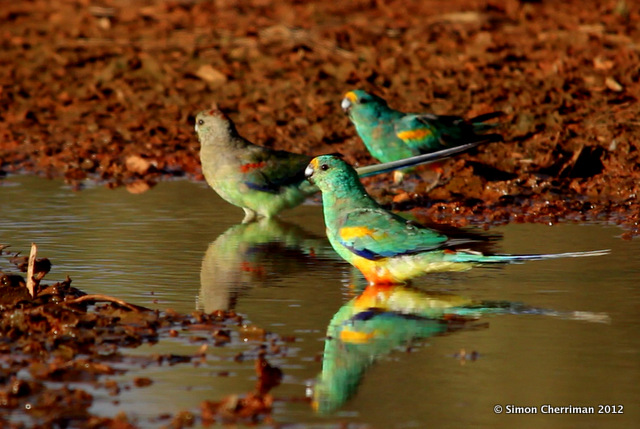The
above skeletal collection is something that I would usually be very
excited about, having found bones beneath the nest of an Australian bird
of prey. However, the 32 skulls pictured above do not represent birds
killed in a natural situation... they were recovered from an outback
death trap, in Western Australia’s Murchison region.
This death trap was the abandoned water tank pictured below.
I’d
spent the first rays of daylight eating my breakfast and waiting for
birds to come in to drink at an old trough on a farming property just
south of Cue. The bent windmill nearby had stopped working, but the
trough had filled with water from recent rains, something which had not
escaped the attention of local birds. The previous few days I’d seen
Australian Ringnecks (Barnadius zonarius), Bourke’s Parrots (Neopsephotes bourkii) and even Mulga Parrots (Psephotes varius)
gathering at the precious water source in an otherwise barren
landscape. They drank momentarily before fleeting off into the scrub. On
this still morning, a lone Budgerigar had burst from its roost,
narrowly escaping with its life after a male Collared Sparrowhawk (Accipiter cirrhocephalus) chanced a sudden attack.
I
walked over to the trough, the water supply in which was now dwindling
and covered in algae. Only a few insects floated down to the moisture.
The surrounding silence was deafening.
The
large, fiberglass tank near the windmill then caught my attention.
Curious to see if any water remained inside, I walked over to an opening
in the top and peered inside. As my eyes adjusted to the darkness, I
could make out the shape of many small bones scattered over a layer of
cracked, dusty mud on the floor of the tank. Grabbing a head-torch from
my dashboard, I climbed up to the opening and lowered myself inside.
Closer
inspection revealed the bones were all those of birds - skulls, lower
jaws, sternums, wing bones. Five, eleven, sixteen, twenty-five...
thirty-TWO!! I gathered the skulls together and arranged them in front
of me. What a terrible shame, and a horrible way to die.
Most
of the skulls belonged to galahs, with a couple of pigeons and a few
parrots, probably of the species mentioned above. These individuals must
have been attracted to a shallow layer of water that once remained
inside the tank. Over decades the birds had learnt about this artificial
watering point, and had come to drink one day... but the trough was
dry. So they inquisitively sought out moisture inside the tank. Once
inside, they would have had nowhere to land, and no easy way out. The
opening in the top was too small. Flapping frantically, they eventually
became bedraggled and were sucked under the water. Slowly submerging and
drowning inside the plastic prison.
And unnecessary deaths like this could have been avoided... with ONE LITTLE LID.
There is an old saying “Out of sight, out of mind.” When we make changes to the landscape, then forget about them, impacts resultant from these changes cease to exist in our thoughts. But they don’t cease to occur. Such things should be carefully considered when humans come and go, leaving these changes which can have profound affects on other beings.
A family of Mulga Parrots (male at front right, female back left) drinking at an outback puddle.



No comments:
Post a Comment